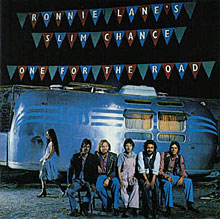Analog Obsession: Helios Console EQs
By Will Shanks
Neve and SSL have always garnered much of the brand recognition and cachet for British consoles. However, the hippest in the business know that Helios consoles were used to record and mix some of the finest rock, pop and reggae classics ever produced. The Beatles, Led Zeppelin, the Rolling Stones, The Who, Roxy Music, Queen, Jimi Hendrix, Bob Marley and many others have worked with these amazing wrap-around consoles.
Helios Origins
While short-lived, Helios had a huge impact on popular music, with a design so sought after that many of the rock-and-roll elite purchased these consoles for their personal use. The first Helios branded consoles were conceived in 1969, and the final consoles were built by Helios a brief ten years later. Of all Helios consoles produced, the original “Type 69” is considered the most musical, much in the same way the original 1073 is the most treasured Neve module.
"The hippest in the business know that Helios consoles were used to record and mix some of the finest rock, pop and reggae classics ever produced"
Helios was founded by the technically brilliant Abbey Road designer Dick Swettenham, after Island Records owner and producer Chris Blackwell approached him to build a custom console for Blackwell's own Basing Street Studio. I recently paid a visit to Berkeley’s Morningwood Studios and was able to check out the very console originally built for Island’s Basing Street Studio in London, now owned by Engineer Jason Carmer.
 |
 |
Basing Street—Home of the original Type 69 Helios desk |
The same desk--now in Berkeley’s Morningwood--nearly 40 years later |
Swettenham’s custom designs first appeared in the mid sixties at the highly popular independent studio Olympic, where he was the technical director. This is where many clients first got a heavy dose of his sound, and is really where the Helios desk originated. Once word began to get around about the new company, additional orders started to come in—from, to name a few, the Beatles and Apple Records, the Rolling Stones for their mobile recording truck and Richard Branson of Virgin Records. Many more customers began to materialize as the Helios reputation grew, such as the Who’s Ramport Studio, Eric Clapton and the Small Faces’ Ronnie Lane, whose mobile truck (an imported Airstream trailer from America) housed a Helios desk and recorded classics from Led Zeppelin, among others.
 |
Ronnie Lane’s mobile Helios control room, pictured on his One for the Road album |
Aesthetically, the Helios was unique for its wrap-around layout. Rather than wheeling down the console length in a chair, the Helios kept the operator much closer to the sweet spot. Also, the console sections were positioned at a much higher angle, putting the controls within easier reach than other consoles.
"Rather than wheeling down the console length in a chair, the Helios kept the operator much closer to the sweet spot."
 |
Channel module from the Type 69 desk |
The Sound
As with all the best gear, the Helios sound is not transparent, but adds a distinctive tonal quality to the recording. Part of the Helios sound was made up of the flattering mic preamps with the Lustraphone transformers, but the mic pres were only part of the sound. The quirky EQ section of the Helios is where the design really shines.
With only three bands, the simple yet powerful EQ imparts colorful tonality, and is anything but neutral. Yet it can be pushed to its most extreme boost settings while retaining openness and clarity. The treble band is a beautiful sounding fixed 10kHz shelf EQ as it steps through its ten gain positions. The bass band functions as either a 50Hz shelf filter with selectable cuts (-3,-6,-9,-12,-15 dB), or a four-frequency selectable (60, 100, 200, 300) peak EQ. The bass peak EQ is odd in that even when the gain control is set at 0 dB, there is still a dramatic boost in band signal (roughly 2 dB!). The mid band operates as a frequency selectable peak (PK) or trough (TR) EQ. This mid band is unique in functionality because the peak/trough is assignable with the flip of a switch. This makes it handy for finding and setting notch cuts—turn up the gain pot and set the switch to “peak” to find the offending frequency—then simply switch to “trough” to cut. The mid band has eight stepped frequencies to choose from (700 Hz, 1, 1.4, 2, 2.8, 3.5, 4.5, 6 kHz).
"The simple yet powerful EQ imparts colorful tonality, and is anything but neutral. Yet it can be pushed to its most extreme boost settings while retaining openness and clarity."
Helios Today
While Dick Swettenham passed away in 2000, two British companies are currently offering hardware products based on original Helios designs: Tony Arnold of Helios Electronics Ltd., and Crispin Horsfield of Helios Professional Audio Ltd. More information on the history of the Rolling Stones Mobile is available here.